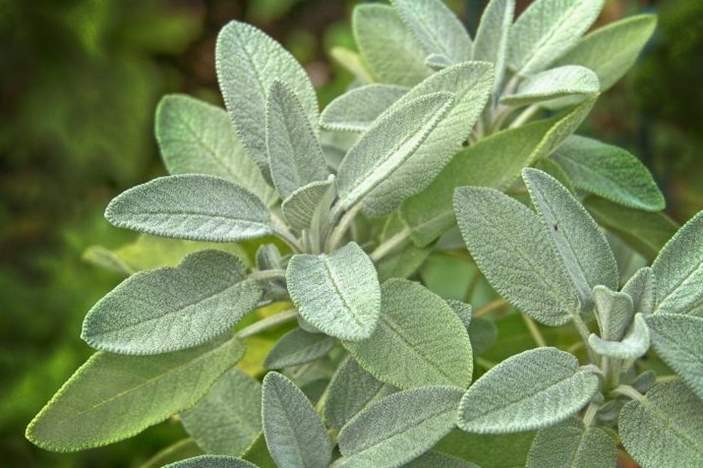Before we give you an answer on whether bunnies eat sage or not, let us have an overview and description to ensure you can positively identify this herb and not to confuse it with other similar looking or named plants.
Overview
Salvia officinalis or sage, also known as common, kitchen, true, golden, Dalmatian, broadleaf, garden, or culinary sage), is a culinary herb in the family Lamiaceae (mint family). It has a savory flavor with a slight peppery tinge.

This perennial, evergreen subshrub native Mediterranean region that has been naturalized in many parts of the world also has ornamental value and uses in folk medicine. Again, this herb is valued for its essential oil.
Various cuisines around the world may use this herb alone or together with other herbs like parsley, rosemary, or thyme. Popular dishes include flavoring black tea (Egypt), condiment for saltimbocca, pork, Lombard cuisine, Lincolnshire sausages, among others.
Description and identification
Sage has a woody stem, lavender flowers with some being white, purple, or pink and grayish-green leaves. The leaves rugose leaves on the upper side while the lower side has soft short hairs that make them nearly white.
Can rabbits eat sage?
Yes. Rabbits can eat sage leaves and stems (foliage). Various Salvia officinalis cultivars like Alba, Aurea (golden sage), Extrakta, Icterina, Lavandulaefolia, Purpurascens, Tricolor, and Berggarten are safe to rabbits (not toxic or poisonous).
While it is safe for your bunnies, its aromatic scent and peppery taste make it not one of the plants that your bunny will like. Even wild rabbits will tend to avoid it together with other aromatic herbs like lemon balm, thyme, oregano, rosemary, and so on.
However, some rabbits will like and nibble sage. If yours happen to like this herb, give them only a small amount of the leaves together with the stem as an occasional treat and not a replacement to the hay, leafy greens, or pellets you feed this furry critter. Once or twice a week will work well.
Salvia officinalis has some nutrients, has antioxidants that will neutralize any free radicals while boosting immunity, is good for oral health (has antimicrobial properties), and may support brain health.
When buying it, go for organically grown one, wash it under running water, cut it into small pieces, and sprinkle it over your bunnies veggie mix. However, don’t forget to begin with a small amount as you watch how their tummy will react and if they like this herb or not.
If you notice diarrhea, gas, bloating, or any stomach troubles, stop giving them this herb and revert to the usual diets. Always remember to introduce only a single new food at a time. How else will you know what causes any intestinal disturbance?
Your bunnies and red or purple sage
The term purple sage may refer to Salvia officinalis and other true sages like Salvia dorrii, (Dorr’s, fleshy, mint or tobacco), Salvia leucophylla (San Louis purple sage, purple or gray, and an aromatic variety) and Salvia pachyphylla (blue or mountain desert sage).
Also, it may refer to unrelated plants like Psorothamnus scoparius, Leucophyllum frutescens (Texas sage), Poliomintha incana, (frosted sage, gray mint). Therefore, before careful when buying
On the other hand, Chinese or red sage refers to Salvia miltiorrhiza (danshen, tan shen) whose roots are of much value in traditional Chinese medicine.
Our discussion was about Salvia officinalis (the one you use for culinary purposes), which we have said to be safe to rabbits and not the other Salvia species, similar plants or other plants bearing the name. We will look at their safety separately.
Conclusion
An ideal bunny diet must have unlimited grassy hay. We have some of the best hay brands for rabbits to buy. Also, let high fiber pellets account for 5% of their diet to ensure your bunny has all the minerals necessary while 10-15% of their diet should be fresh foods.
Fresh foods will offer additional vitamins and phytochemicals and ensure the larger percentage is leafy greens. Fruits, flowers, herbs, and non-leafy vegetables are only treats given occasionally.
